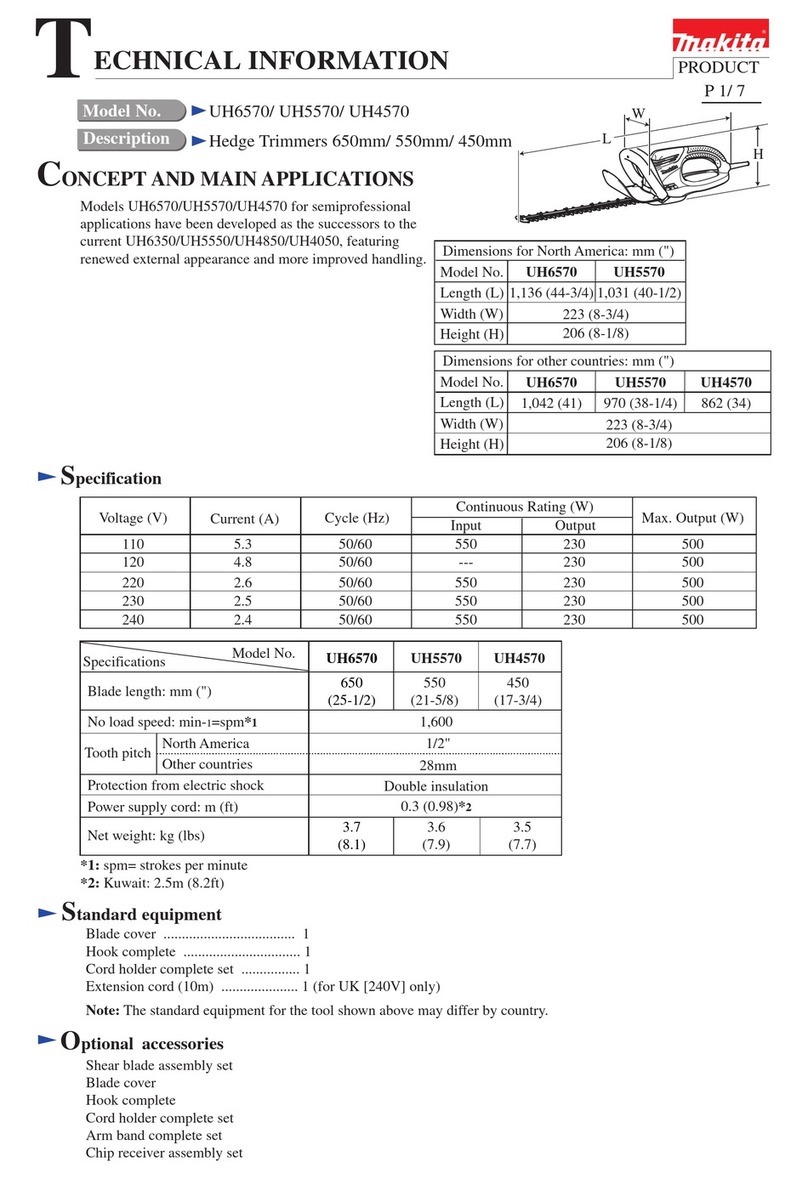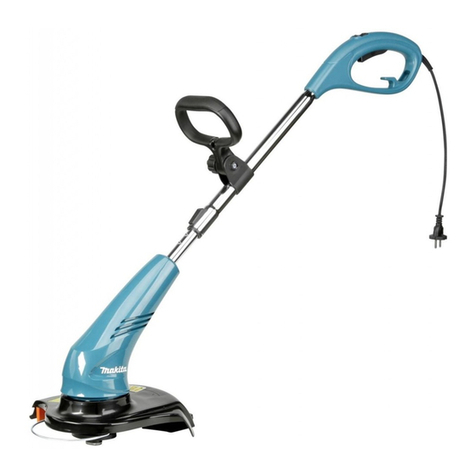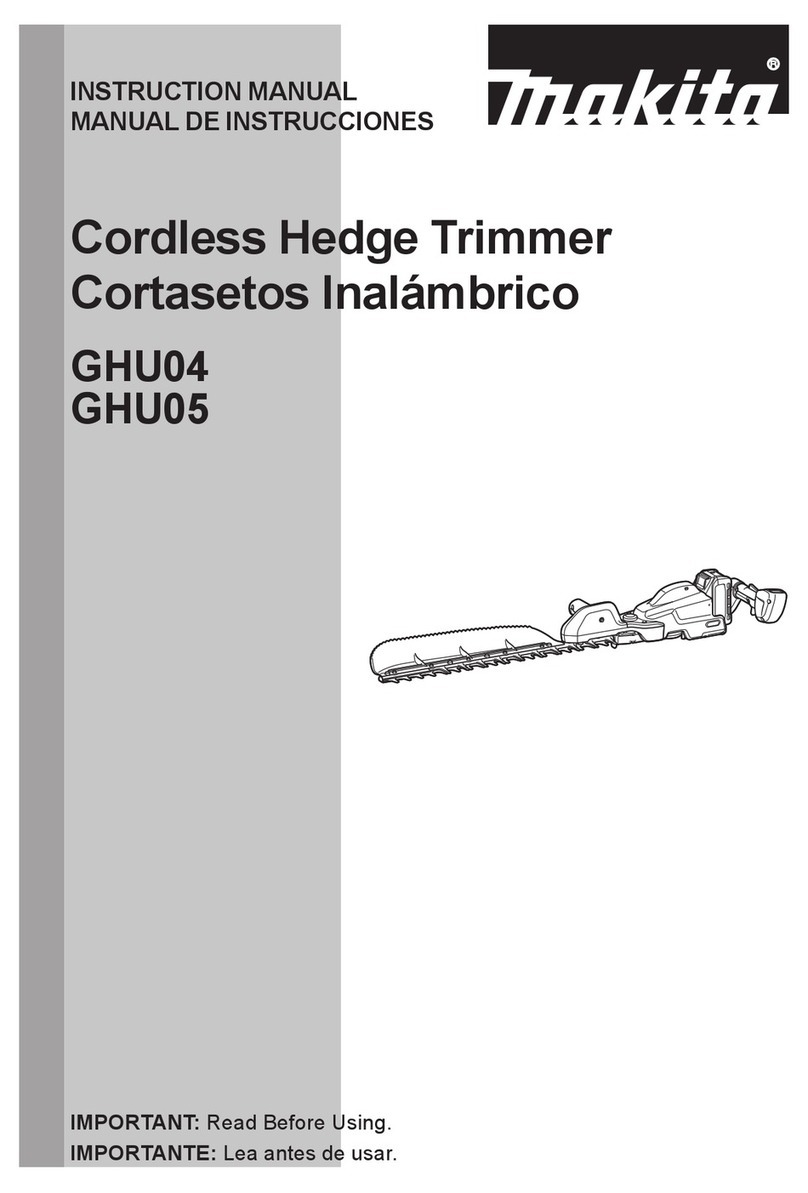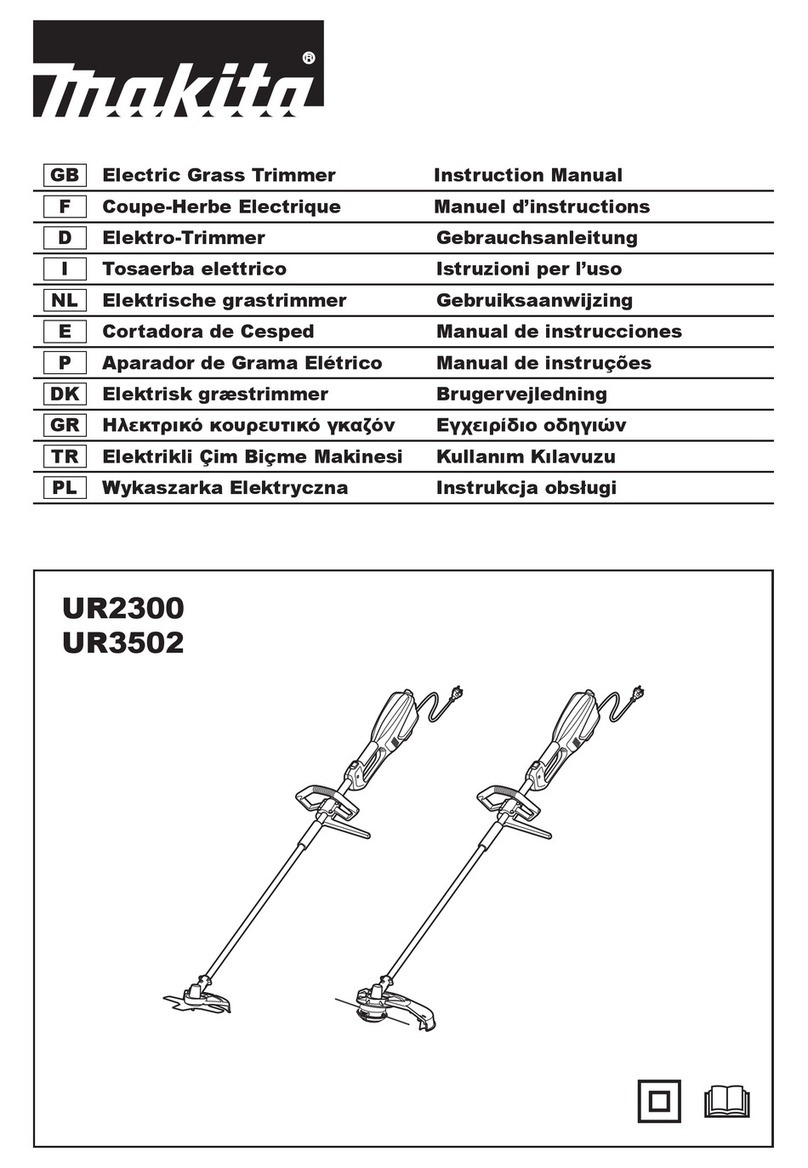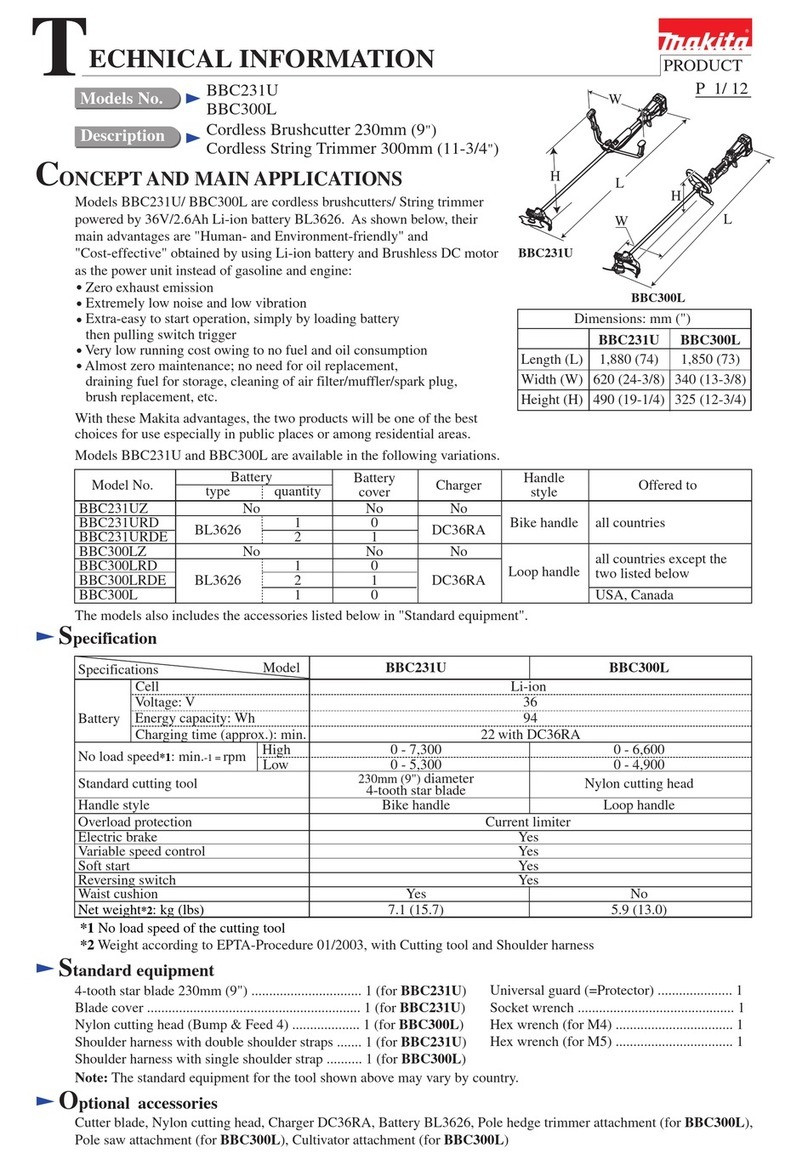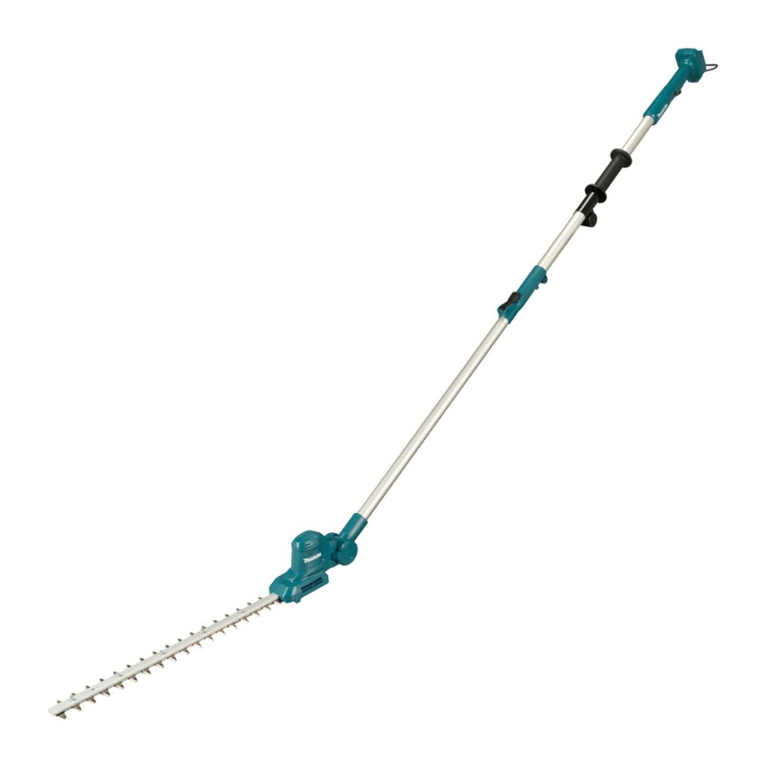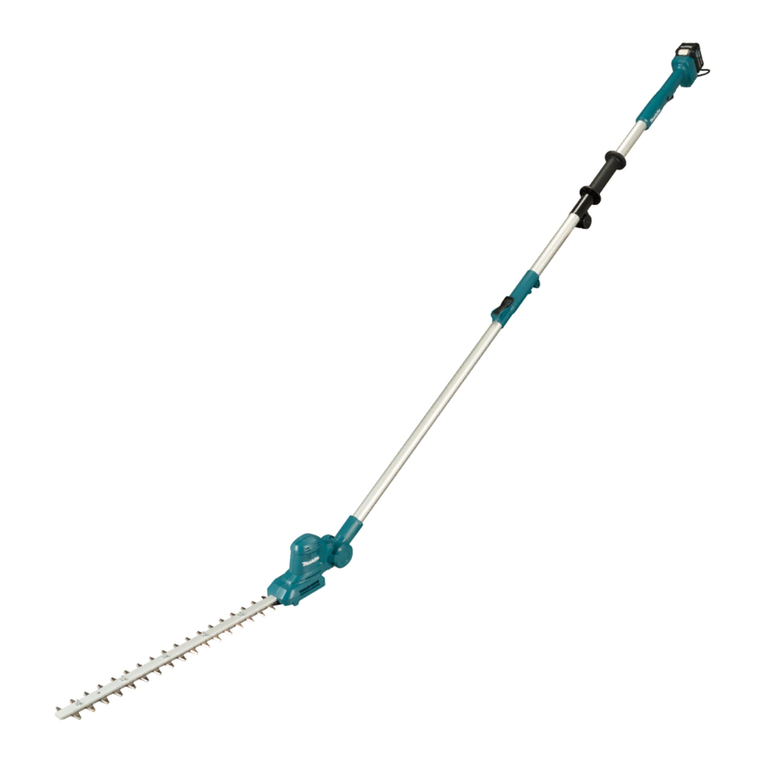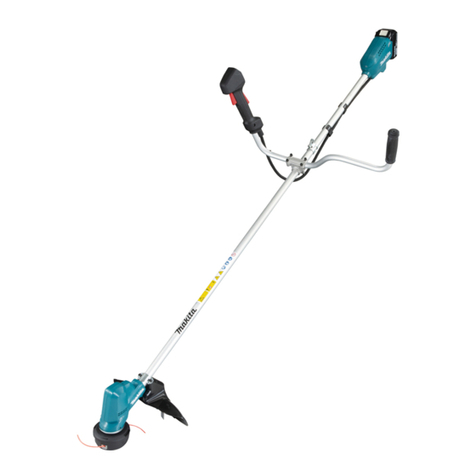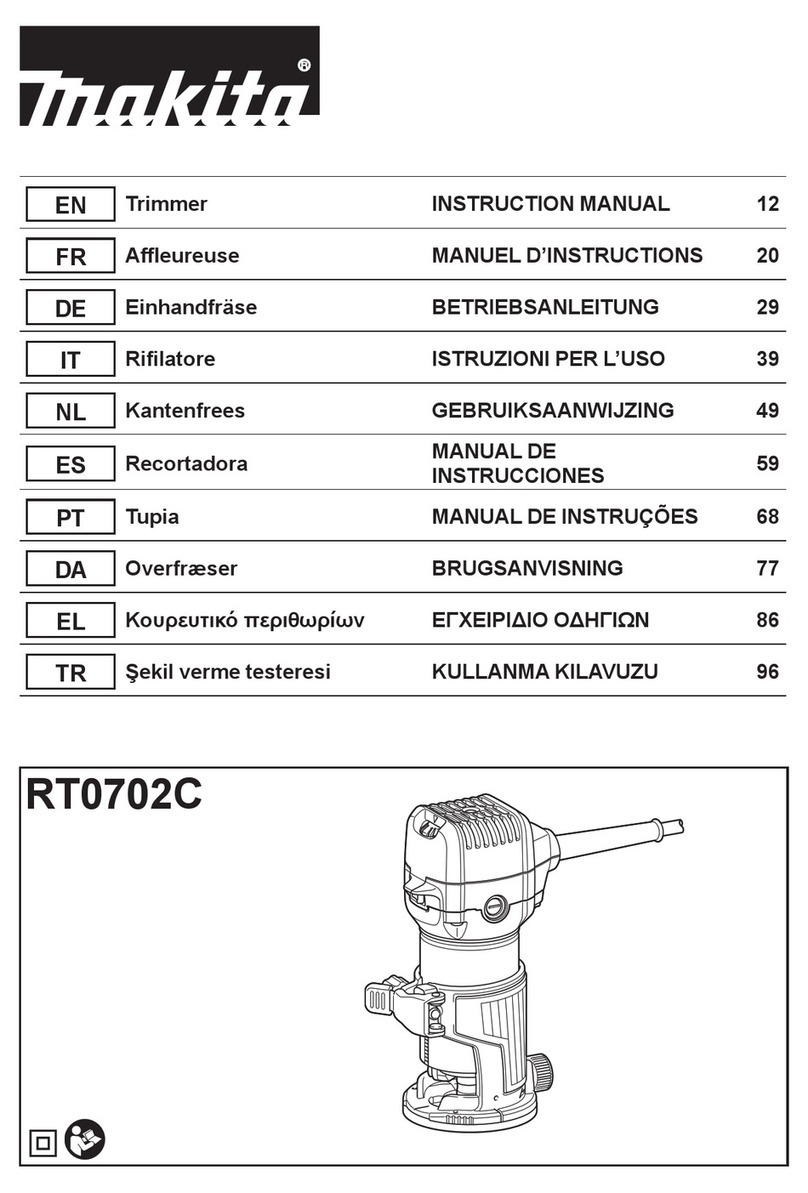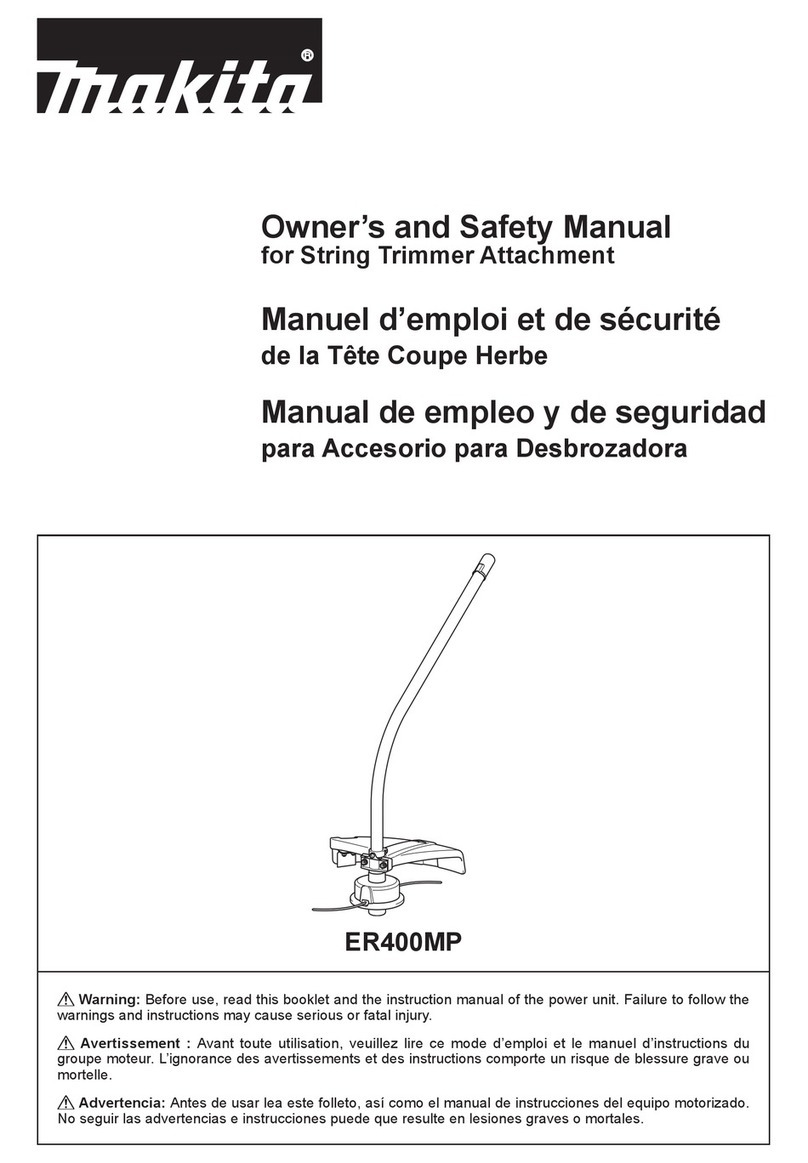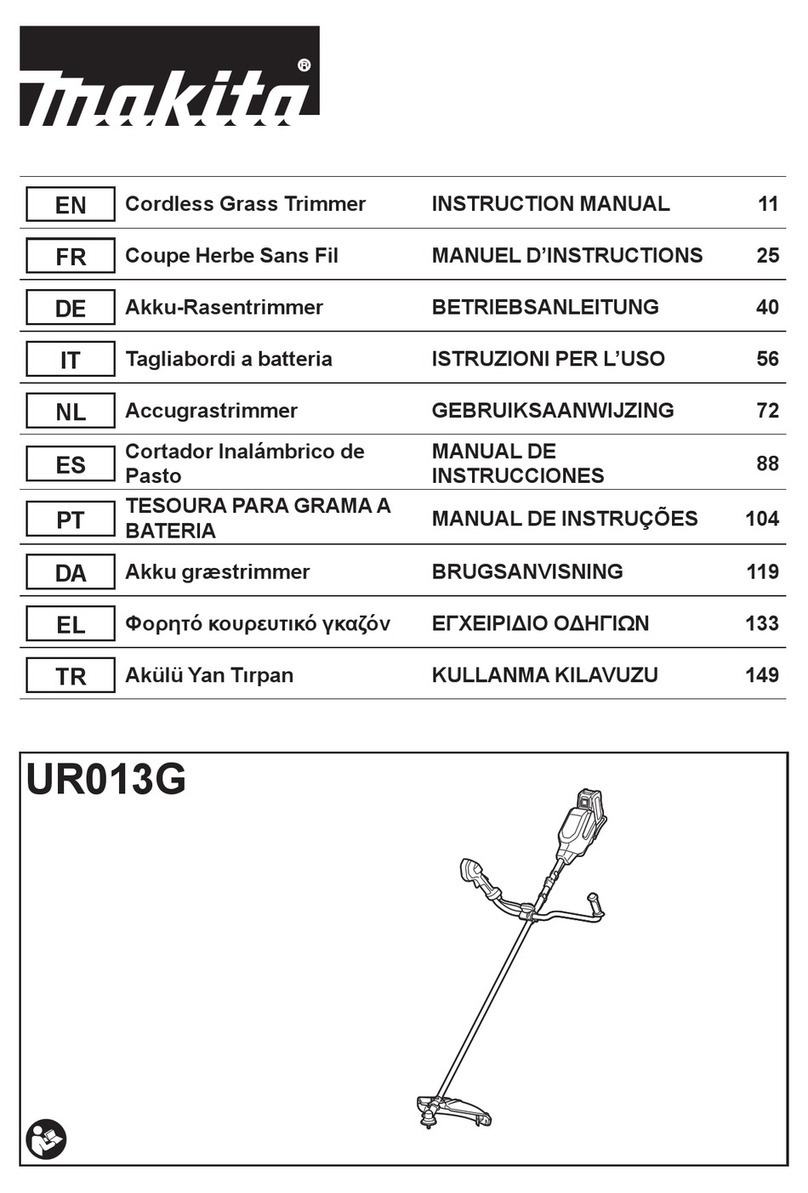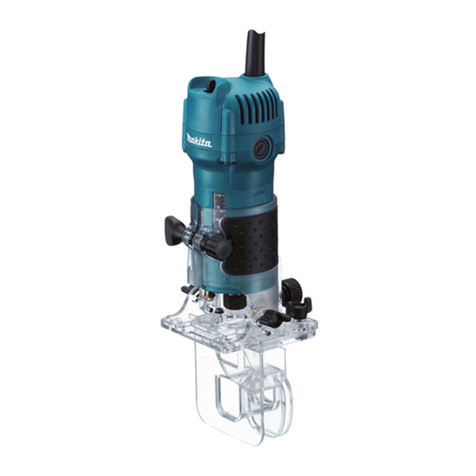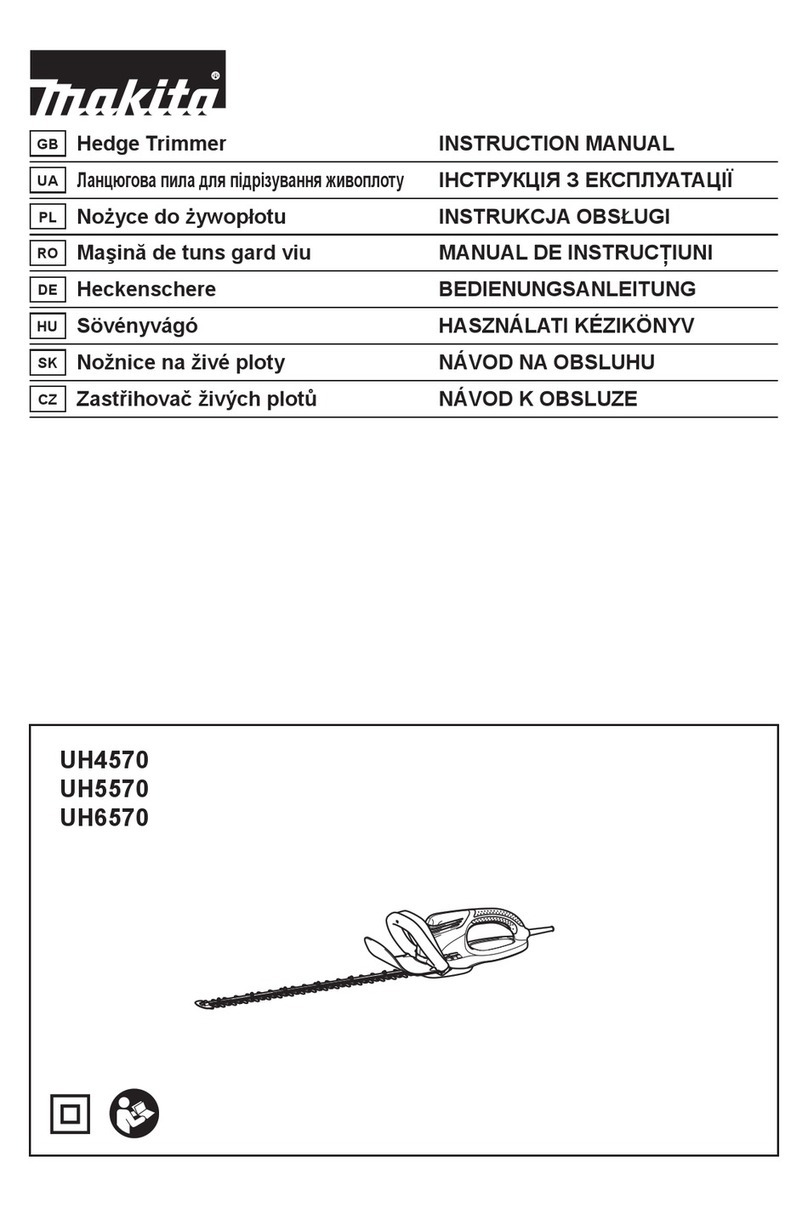10
CORDLESS HEDGE TRIMMER
SAFETY WARNINGS GEB062-5
1. Keep all parts of the body away from the cutter
blade. Do not remove cut material or hold material
to be cut when blades are moving. Make sure the
switch is off when clearing jammed material. A
moment of inattention while operating the hedge
trimmer may result in serious personal injury.
2. Carry the hedge trimmer by the handle with the
cutter blade stopped. When transporting or
storing the hedge trimmer always fit the cutting
device cover. Proper handling of the hedge trimmer
will reduce possible personal injury from the cutter
blades.
3. Hold the power tool by insulated gripping surfaces
only, because the cutter blade may contact hidden
wiring. Cutter blades contacting a “live” wire may
make exposed metal parts of the power tool “live” and
could give the operator an electric shock.
4. Do not use the hedge trimmer in the rain or in wet or
very damp conditions. The electric motor is not
waterproof.
5. First-time users should have an experienced hedge
trimmer user show them how to use the trimmer.
6. The hedge trimmer must not be used by children or
young persons under 18 years of age. Young persons
over 16 years of age may be exempted from this
restriction if they are undergoing training under the
supervision of an expert.
7. Use the hedge trimmer only if you are in good physical
condition. If you are tired, your attention will be
reduced. Be especially careful at the end of a working
day. Perform all work calmly and carefully. The user is
responsible for all damages to third parties.
8. Never use the trimmer when under the influence of
alcohol, drugs or medication.
9. Work gloves of stout leather are part of the basic
equipment of the hedge trimmer and must always be
worn when working with it. Also wear sturdy shoes
with anti-skid soles.
10. Before starting work check to make sure that the
trimmer is in good and safe working order. Ensure
guards are fitted properly. The hedge trimmer must
not be used unless fully assembled.
11. Make sure you have a secure footing before starting
operation.
12. Hold the tool firmly when using the tool.
13. Do not operate the tool at no-load unnecessarily.
14. Immediately switch off the motor and remove the
battery cartridge if the cutter should come into contact
with a fence or other hard object. Check the cutter for
damage, and if damaged repair immediately.
15. Before checking the cutter, taking care of faults, or
removing material caught in the cutter, always switch
off the trimmer and remove the battery cartridge.
16. Switch off the trimmer and remove the battery
cartridge before doing any maintenance work.
17. When moving the hedge trimmer to another location,
including during work, always remove the battery
cartridge and put the blade cover on the cutter blades.
Never carry or transport the trimmer with the cutter
running. Never grasp the cutter with your hands.
18. Clean the hedge trimmer and especially the cutter
after use, and before putting the trimmer into storage
for extended periods. Lightly oil the cutter and put on
the cover. The cover supplied with the unit can be
hung on the wall, providing a safe and practical way to
store the hedge trimmer.
19. Store the hedge trimmer with the cover on, in a dry
room. Keep it out of reach of children. Never store the
trimmer outdoors.
SAVE THESE INSTRUCTIONS.
WARNING:
DO NOT let comfort or familiarity with product (gained
from repeated use) replace strict adherence to safety
rules for the subject product. MISUSE or failure to
follow the safety rules stated in this instruction
manual may cause serious personal injury.
CORDLESS GRASS SHEAR
SAFETY WARNINGS GEB070-4
WARNING! IMPORTANT READ CAREFULLY all
safety warnings and all instructions BEFORE USE.
Failure to follow the warnings and instructions may result
in electric shock, fire and/or serious injury.
Save all warnings and
instructions for future reference.
General instructions
1. To ensure correct operation, user has to read this
instruction manual to make himself familiar with the
handling of the equipment. Users insufficiently
informed will risk danger to themselves as well as
others due to improper handling.
2. Never allow children, persons with reduced physical,
sensory or mental capabilities or lack of experience
and knowledge or people unfamiliar with these
instructions to use the machine, local regulations may
restrict the age of the operator.
3. Use the equipment with the utmost care and attention.
4. Operate the equipment only if you are in good physical
condition. Perform all work calmly and carefully. Use
common sense and keep in mind that the operator or
user is responsible for accidents or hazards occurring
to other people or their property.
5. Never operate the machine while people, especially
children, or pets are nearby.
6. Never use the equipment after consumption of alcohol
or drugs, or if feeling tired or ill.
7. The motor is to be switched off immediately in case
that the equipment shows any problem or abnormal
sign.
8. Switch off and remove the battery cartridge when
resting and when leaving the equipment unattended,
and place it in a safe location to prevent danger to
others or damage to the equipment.
9. Don’t force the equipment. It will do the job better and
with less likelihood of a risk of injury at the rate for
which it was designed.
10. Don’t overreach. Keep proper footing and balance at
all times.

